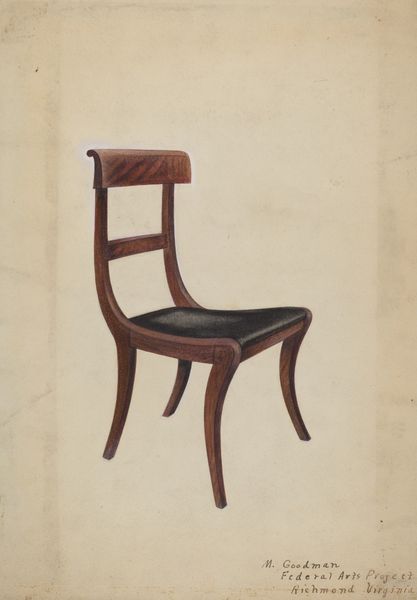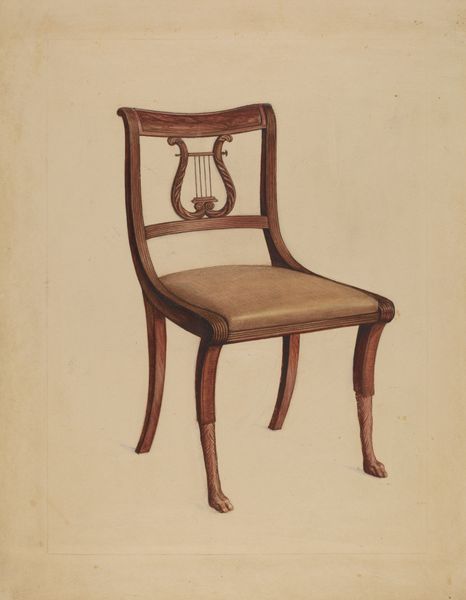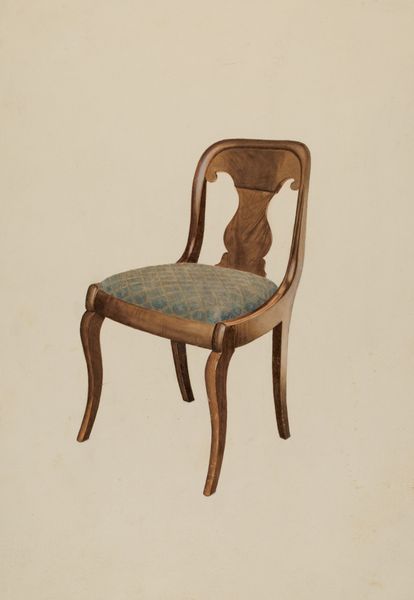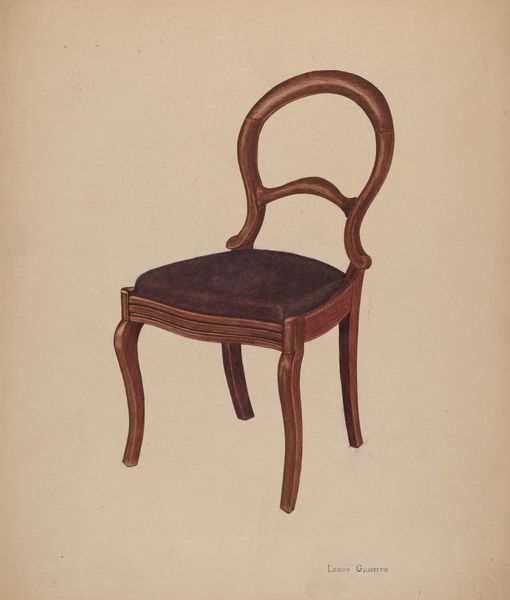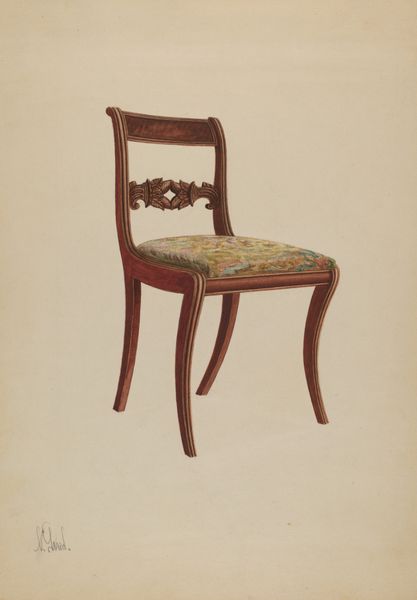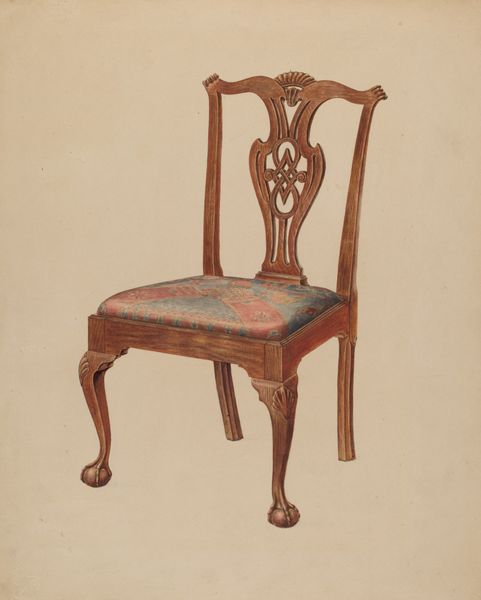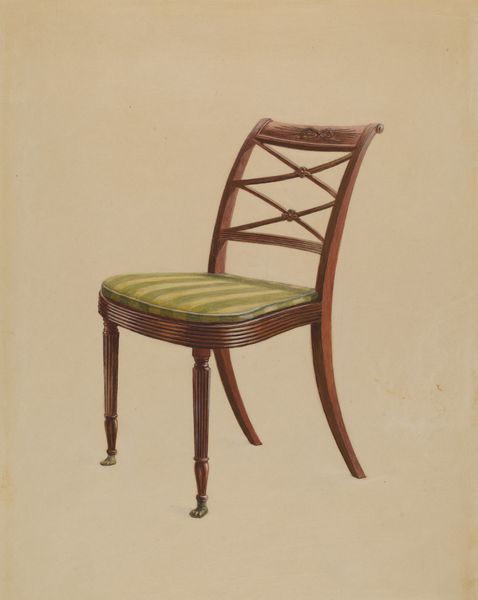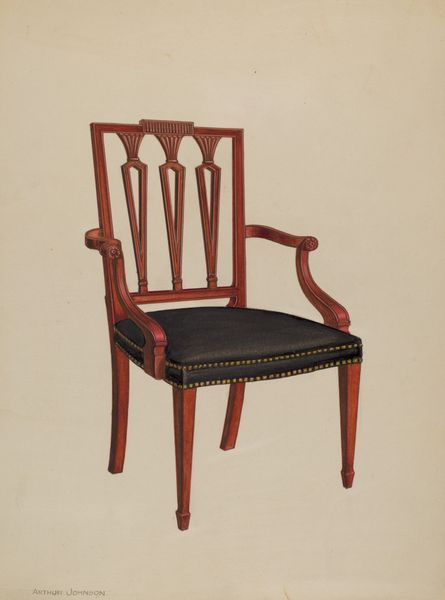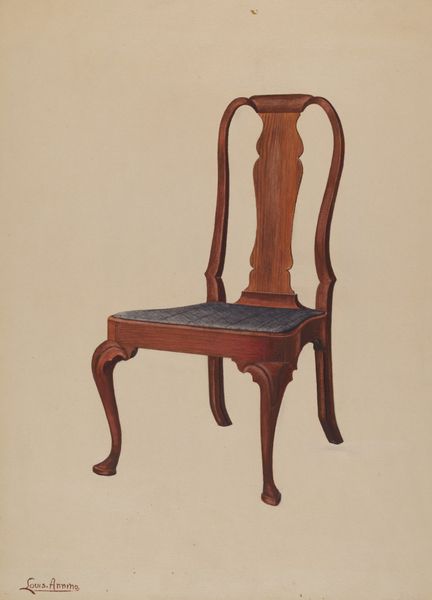
drawing, pencil, wood
#
drawing
#
geometric
#
pencil
#
wood
#
watercolour illustration
#
academic-art
Dimensions: overall: 36.3 x 30.1 cm (14 5/16 x 11 7/8 in.) Original IAD Object: 33 1/2"high, 18 1/4"wide, 16 3/4"deep
Copyright: National Gallery of Art: CC0 1.0
Curator: Looking at this artwork, what are your immediate impressions? Editor: It looks like something pulled straight from an early 20th-century architectural magazine—restrained, elegant, but also oddly ghostly with that flat background. There is a quiet luxury. What can you tell me about this object? Curator: This is a pencil and watercolour drawing of a "Side Chair," circa 1937, by Frank Wenger. The drawing presents a meticulously rendered design, probably intended for manufacture. It emphasizes both functionality and the aesthetics associated with classical forms of furniture making. Editor: Ah, so this is design as labour, material made to seem effortless! The sinuous legs, that glossy wooden frame – they conceal hours of craftwork, shaped by skilled hands using specialized tools. Were these chairs actually put into production? Curator: It is hard to say definitively. Chairs of this style had strong links with styles from earlier periods. The chair design points to Wenger’s academic training and understanding of design history. However, it remains unknown if this design was adopted beyond the blueprint stage. It might symbolize the ambitions and constraints faced by designers during the late 1930s. Editor: That's interesting. To me, the very materials shout something about status and the intention to make use of high quality resources in design. Is it too far-fetched to suggest that the dark-colored seat implies that this chair was for someone with authority? Curator: Authority is interesting, but not necessarily through colour alone. Chairs, historically, have signified status, becoming symbolic platforms for leaders and those in positions of power, so the material of construction, rather than necessarily just the colour, may be suggestive in this sense. This chair's relatively modest size could speak volumes, about who it's meant for. Editor: Yes! And how that contrasts to its elegant details—it’s a really intriguing tension! Thank you for sharing such a perspective. Curator: My pleasure; this particular design provides an intriguing entry point into considering art not only as aesthetic accomplishment but as a physical object which had its potential trajectory shaped through socioeconomic forces.
Comments
No comments
Be the first to comment and join the conversation on the ultimate creative platform.
